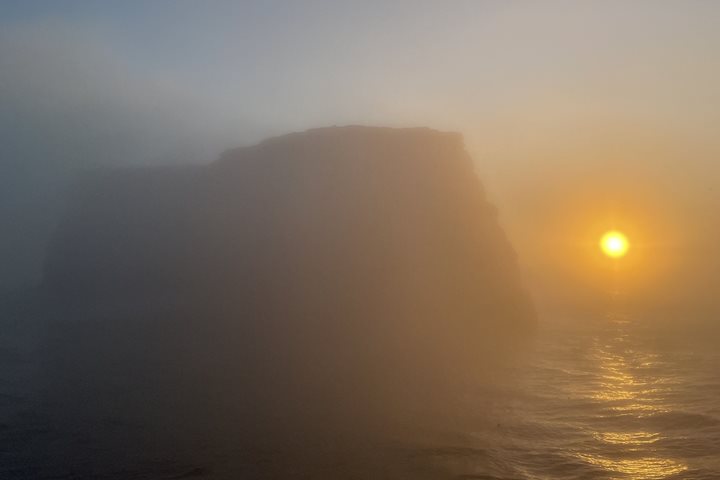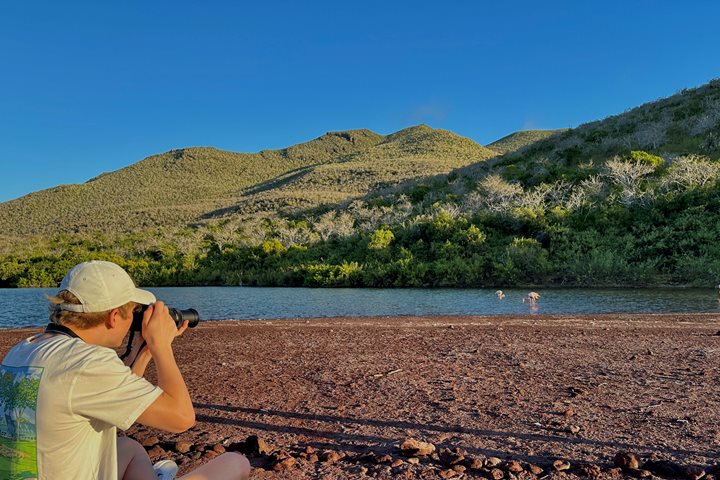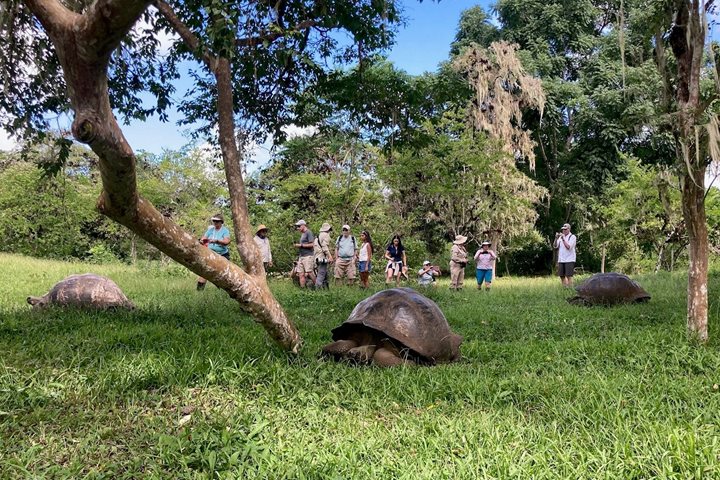We left behind Black Turtle Cove and sailed south to visit Puerto Ayora, the largest town on Santa Cruz Island and the rest of the Galapagos. Santa Cruz Island is the second largest of the archipelago and undoubtedly the best place to observe giant tortoises in their natural habitat. With its highlands covered with green vegetation and spring weather conditions, Santa Cruz showed us a different face of the Galapagos.
After breakfast we headed to Puerto Ayora, headquarters of the National Park Service and home of the Charles Darwin Research Station. As soon we got there, we boarded the buses heading to the highlands to visit one of the oldest farms in Santa Cruz, called “El Trapiche.” Its owner, Mr. Adriano Cabrera, showed us the process for turning sugar cane into moonshine, a recipe that has been in his family for 40 years. This plantation also produces coffee, avocados, papayas, pears, and bananas. Like traveling back in time, our guests enjoyed the rustic charm of the place.
Afterwards, we headed to “Los Gemelos.” Commonly known as “The Twins,” they are a pair of pit craters located in the center of Santa Cruz Island. The collapse of a magma chamber formed both craters a long time ago. The holes are estimated to be a few hundred feet deep with sheer cliffs surrounding the dense vegetation below. We walked along the two craters covered by a forest of Scalesia Pedunculata, an endemic tree, found in the highlands. We spotted finches, mockingbirds, and Galapagos flycatchers.
Next up was a succulent and delicious lunch at El Manzanillo Farm, where we could see the emblematic giant tortoises in their natural habitat. We found them everywhere, along the road, climbing hills, resting inside muddy puddles, or feeding on grass. We observed males and females of different sizes and ages roaming freely and indifferently.
At 2:30 pm we headed back to Puerto Ayora to visit the Galapagos National Park’s giant tortoise breeding center. We saw baby tortoises that only left their incubators a few months earlier and we appreciated the differences in size and carapace shape of the males and females in their corrals.
It was late and the temperature was cool as both land and sea birds returned to their nests. And so must we return to our floating home, National Geographic Islander II.







